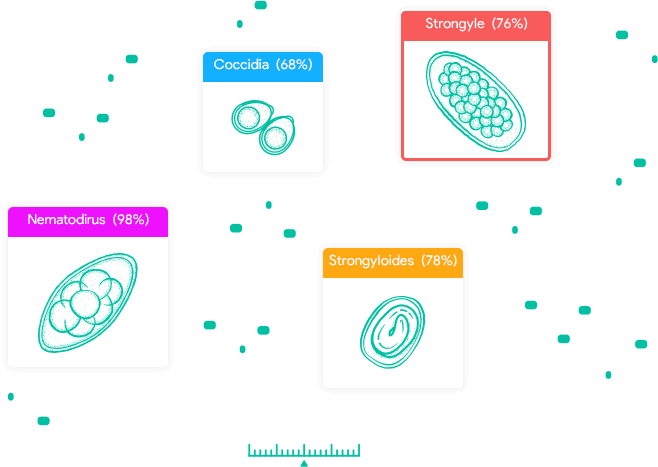Parasites

Coccidia (20 – 40 µm)
Coccidia are a protozoan. They are single-celled organisms which can affect all grazing animals. Young animals are particularly vulnerable. Coccidiosis is one of the most common diseases that cause damage to the intestinal tract, particularly in sheep and calves. Coccidiosis in lambs is one of the most economically detrimental diseases of sheep, causing production losses in flocks in the UK and Ireland.
Strongyle (80 x 45 µm – 95 x 50 µm)
Strongyles are a type of roundworm egg encompassing a variety of species. The most clinically relevant are Haemonchus contortus, Teladorsagia and Trichostrongylus species. These affect both young and older animals, causing parasitic gastroenteritis from mid-summer onwards, especially in sheep, cattle and horses.
Nematodirus (200 x 90 µm)
Nematodirus battus, a roundworm, affects young sheep and cattle in the late spring and early summer, causing Nematodirosis. Symptoms of this include sudden onset diarrhoea which can cause death. The hatching of Nematodirus worm eggs occurs on pasture when there is a cold period followed by prolonged warmer conditions.
Strongyloides (50 x 22 µm)
Strongyloides are also known as a threadworm in the US. An infection of Strongyloides affects the small intestine of sheep, especially lambs, as well as cattle and goats. An infection can cause diarrhoea and malnutrition, especially in young animals.